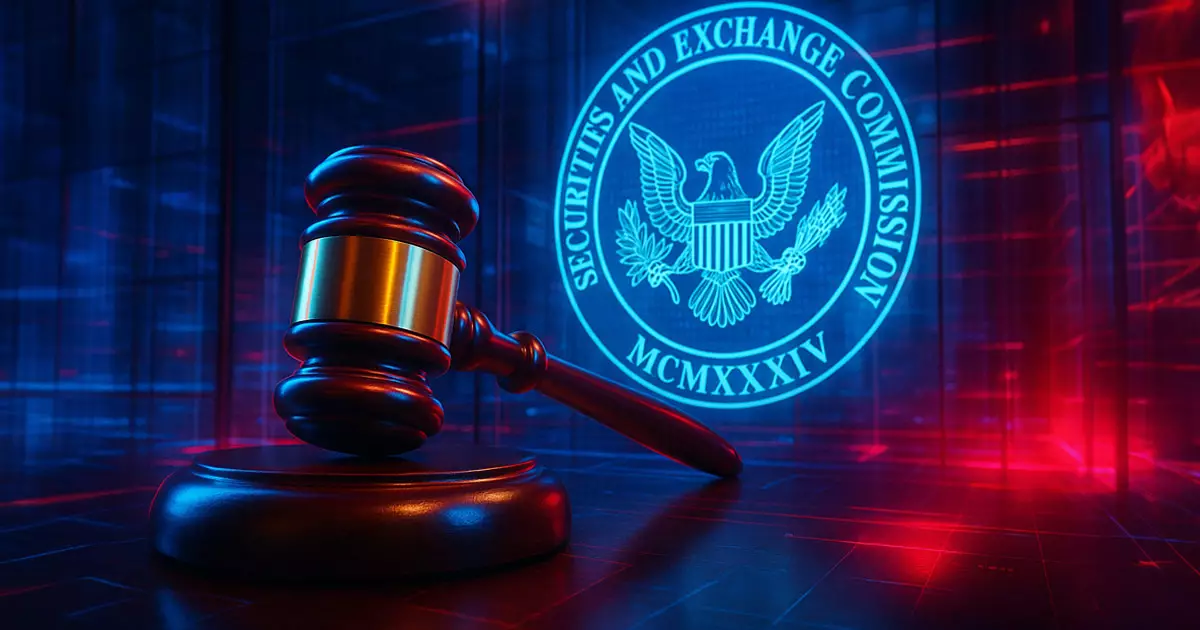The decentralized finance (DeFi) sector finds itself in an unprecedented juncture, teetering between innovation and regulatory scrutiny. As various stakeholders—including developers, investors, and regulators—attempt to navigate the complex waters of cryptocurrency, the necessity for a structured regulatory environment has become increasingly apparent. The recent proposal from the DeFi Education Fund (DEF) to the Securities and Exchange Commission (SEC) serves as a clarion call for a “token safe harbor” framework. The looming threat of overregulation could stifle progress and innovation in DeFi, which has the potential to democratize finance on a global scale.
Five Core Principles and Their Implications
At the heart of the DEF’s proposal lies five fundamental principles aimed at establishing a fair and conducive ecosystem for token projects. The advocacy for a technology-agnostic approach is particularly noteworthy; rules and regulations should not entrench specific technologies or governance models, which could create market distortions and hinder innovation. By avoiding the pitfalls of favoring particular consensus mechanisms, the SEC would encourage a spirit of experimentation that is essential for the maturation of DeFi technologies.
Furthermore, eligibility criteria outlined by the DEF are not without merit. Expanding the safe harbor’s qualifications to include not just new projects but also those already in circulation acknowledges the diversity and dynamism of the crypto landscape. This inclusivity fosters greater participation and protects early-stage developers from debilitating regulatory burdens, which could lead to unintended market exits.
The Balancing Act of Disclosure
One of the most courageous aspects of the DEF’s proposal is its approach to disclosure requirements. The call for balanced obligations reflects an understanding of the unique challenges that early-stage development teams face. By advocating for disclosures centered on source code transparency, token economics, and governance structures, the DEF strikes a vital balance. This nuanced approach can enhance investor confidence without overwhelming projects with onerous compliance costs that might divert resources from actual development.
Periodic disclosures are particularly intriguing, as they would not only help cultivate transparency but also allow for ongoing assessments of project viability. An API-driven compliance framework could streamline these processes, making it easier for teams to fulfill their obligations without compromising on speed or innovation. The recognition that a well-structured disclosure regime can elevate accountability is a significant step towards building trust in the DeFi sector.
Defining the Path to Decentralization
The concept of an “Exit Test” stands out as one of the proposal’s most innovative aspects. The criteria outlined for passing this test aim to ensure that projects genuinely transition away from centralized control and towards a decentralized ethos. However, establishing a clear timeframe, such as three to four years, for achieving this transition raises several questions. A rigid timeline might not accommodate the organic progression of certain projects, which evolve at different paces due to their varying use cases and stakeholder needs.
Nonetheless, extending a safe harbor for projects demonstrating good faith efforts to conform to decentralization standards could help stave off crippling regulations while encouraging compliance. This nuanced shift could strike an important balance between regulatory oversight and fostering a burgeoning ecosystem.
Protecting Market Participants: A Necessary Safeguard
The DEF’s emphasis on protecting secondary market participants is another vital consideration. By proposing that intermediaries—like digital asset exchanges—remain exempt from traditional securities regulations during the safe harbor period, the DEF offers a framework that encourages wider participation while minimizing legal uncertainties. This could unleash the potential of decentralized markets, enabling them to function more effectively without the constraints of traditional regulatory burdens.
However, the underlying assumption that deregulating aspects of trading infrastructure will naturally lead to broader market participation deserves scrutiny. The absence of a comprehensive regulatory framework could sow seeds of insecurity, particularly among investors who lack adequate legal protections.
A Call for Legislative Action
While advocating for a token safe harbor, the DEF also implicitly acknowledges the urgency of a comprehensive legislative framework for digital assets. Temporary regulatory measures, while useful, cannot replace the clarity that comes from well-articulated statutes. A nuanced, multi-faceted approach to regulation that encompasses the complexities of digital assets is essential for ensuring long-term sustainability and fostering a healthy economic environment.
The ongoing discourse between the SEC and the broader crypto community is essential for refining these principles. As the regulatory landscape continues to evolve, continued engagement can serve as a foundation for a robust and inclusive digital asset framework that balances innovation with investor protection. Whether the SEC follows through remains to be seen, but the DEF’s bold vision for a token safe harbor could pave the way for a more flourishing landscape in the DeFi domain.


Leave a Reply